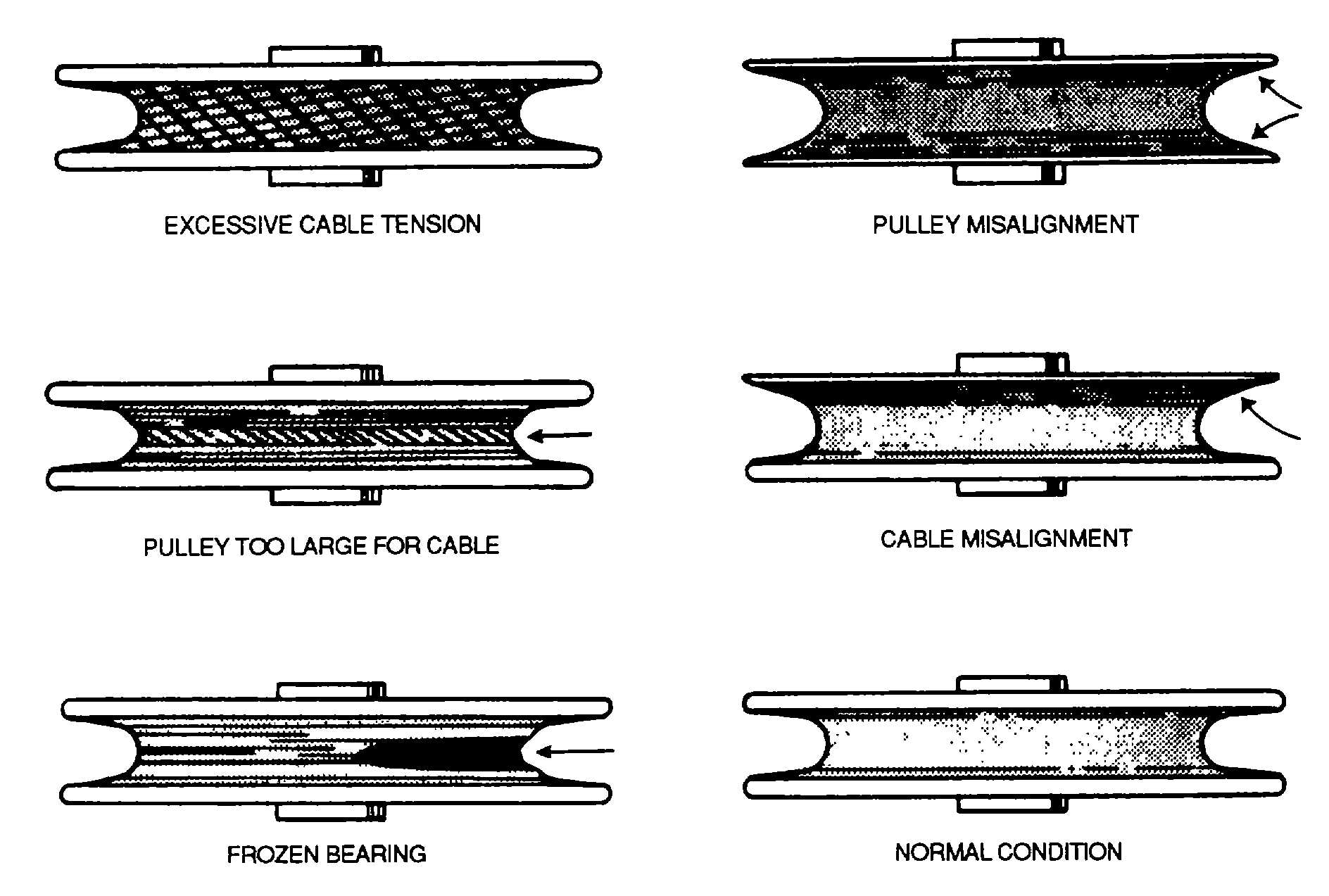TM 1-1500-204-23-1
Figure 9-28. Pulley Wear Patterns
NOTE
It is good practice to rotate the pulley
90 degrees while inspecting, so as to
relocate the used area to another
position and thereby prolong the life
of the pulley
(5)
Control rods. Control rod assemblies
are used as links in mechanical systems to allow remote
operation and adjustment of components. Push-pull
linkage is designed and constructed so that both
torsional and compression forces will be transmitted to
the component being operated. Two common types of
push-pull linkage are the control tube and the control
rod. Control tubes, as shown in figure 9-29, consist of a
metal tube, usually made of steel or an aluminum alloy,
and two rod ends. One rod end is attached to each end
of the metal tube, which may be swaged, expanded, or
reamed at the ends to engage the rod ends. The rod
ends are welded or riveted to the tube.
NOTE
Operation or adjustment of some
accessories
or
flight
controls
requires a rotating motion which
often is accomplished by means of
torque tubes. To effect changes in
direction
of
the
torque
tube,
universal joints are required The
most common are MS20270 and
MS20271, which are attached to the
tube by bolts or rivets.
(a)
Inspection of control tubes. The
procedure which follows is common to all control tube
assemblies
Refer
to
the
applicable
manual
for
inspection of each particular component.
1 Check for bent or flattened
tube.
2 Check tube for nicks, dents,
gouges, scores or scratches, corrosion, and cracks.
9-26

